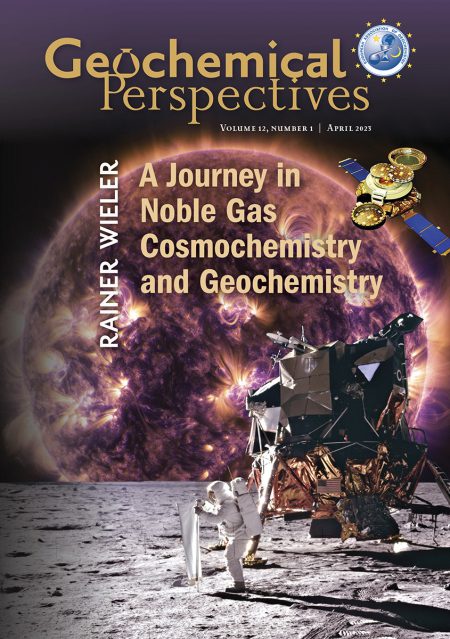
A Journey in Noble Gas Cosmochemistry and Geochemistry
by Rainer Wieler1doi: 10.7185/geochempersp.12.1 | Volume 12, Number 1 (pages 1-178)
Abstract
I started my journey in science by studying noble gases implanted by the solar wind in dust grains on the surface of the Moon, and with many colleagues I have studied solar wind implanted noble gases in natural and artificial samples throughout my career, the latter exposed primarily by the Genesis space mission. Major questions are what noble gases in the solar wind can tell us about the present and the past Sun, and how they can contribute to understanding the formation and history of the planets and their building blocks, represented, for example, by meteorites. Since my early years as a postdoc, I have also been interested in noble gases (and radioactive nuclides) produced in meteorites and other extraterrestrial samples by interactions with energetic elementary particles from galactic cosmic radiation (and the Sun). These so called “cosmogenic” nuclides allow us to study the transport of meteorites to Earth, and the dynamics of the top surface layers (“regoliths”) on the Moon, asteroids, and comets. Cosmogenic noble gases are also crucial for studying even more exotic topics such as the history of tiny presolar grains that formed in the cooling envelopes of earlier generations of stars towards the end of their lives and were eventually incorporated into the meteoritic matter where they are found today. Cosmogenic noble gases in some tiny phases in meteorites are also likely tracers of our highly active Sun at a very early stage in its history. A few years later, I started my third major research topic in cosmochemistry, the study of primordial noble gases in meteorites and other extraterrestrial samples. These noble gases were incorporated into meteorites or their precursors in the early solar system or even in a presolar environment. I also participated in studies by colleagues of isotopic anomalies of other elements important in cosmochemistry, my expertise being mainly in aspects of the influence of cosmic rays on these elements.
Although working in an Earth Science institution, it took quite a while before I started to also study noble gases (and radionuclides) in terrestrial samples. This is described in the second part of this contribution. A major focus was on cosmogenic noble gases and radionuclides produced in samples near the Earth’s surface. Although production rates of cosmogenic nuclides on Earth are several orders of magnitude lower than in space, making their analysis more challenging, they have become an important tool in geomorphology. Because stable noble gas nuclides are particularly well suited to the study of ancient landscapes, much of our work focused on areas with arid climates, such as Antarctica and the Andes in Chile, in collaboration with geoscience colleagues. We also participated in the large multinational CRONUS collaboration, funded by the European Union, a community effort to improve our knowledge of nuclide production rates at the Earth’s surface. In another major collaboration with external colleagues we are involved in noble gas analyses of water samples, ranging from lakes to aquifers to tiny inclusions in stalagmites. This research focuses on studying lake and groundwater dynamics, including contributions of mantle-derived noble gases such as in volcanic lakes. Atmospheric noble gases dissolved in suitable samples are also palaeotemperature indicators, supplementing information from other proxies such as oxygen isotopes.

